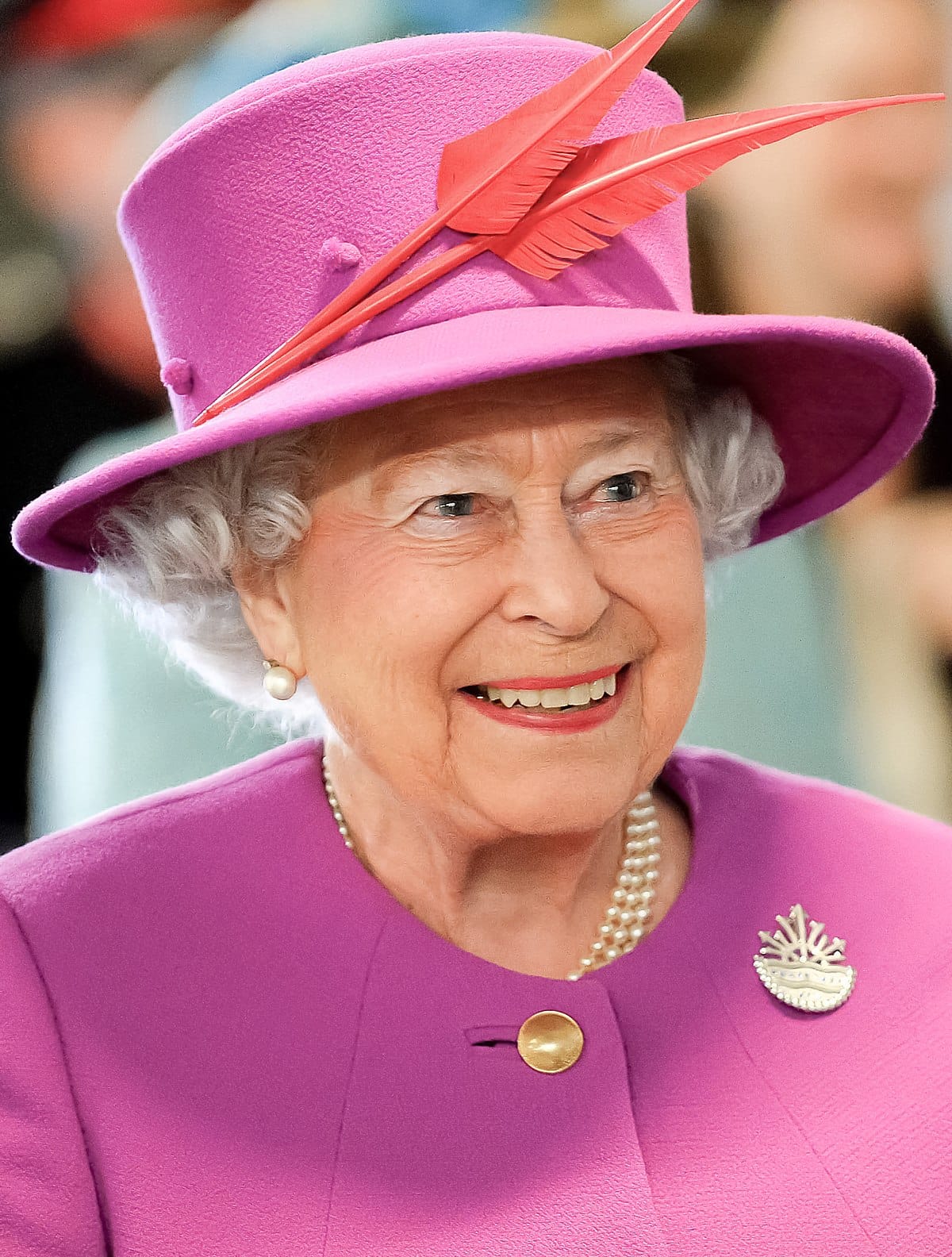Caring About the Queen Is Fun: A Hong Kong Story
Contributing Writer Priscilla Lee ’25 reflects on the cultural impact the royal family has had both in her life and in her hometown of Hong Kong in the aftermath of Elizabeth II’s death.

Whenever anything happens with the British royal family, it seems that the inevitable question is, “Who cares?” But the fact is: We do care. On Thursday, Sept. 8, the day of Queen Elizabeth II’s death, The Student’s opinion editors sent out their weekly email inviting staff to begin writing for next week’s issue. While we were told, as usual, that we could write about anything we wanted to, the email contained a subtle nudge for us to consider writing about the queen. Somehow, it feels like her death must be acknowledged, that a significant portion of the Amherst student population, in one way or another, must care about this piece of news. For this Amherst student, at least, the assumption is correct.
I am not British and have never lived in the U.K. or the Commonwealth, but I do follow the royal family and the Duke and Duchess of Cambridge (now of Cornwall and Cambridge) on Instagram, and have for years. I am slightly embarrassed to admit this, but, to be fair, most of us follow celebrities in some capacity. Like the Kardashians, the royal family offers lavish displays of wealth, photogenic outfits, dramatic controversy, and a constant output of consumable content. This content mostly involves mediocre speeches and photo ops with happy children. It is not all that substantial or valuable. Often, it is laughable, tone deaf, or even harmful — again, just like the Kardashians. But more than reality stars or Hollywood celebrities, the royal family has an extra hold on me because they are still everywhere in the remnants of Britain’s former empire.
I’m from Hong Kong, a city that has a strange relationship with Britain. There were the Opium Wars, and the Treaty of Nanking, and more movements of trade, war, and empire, after which a tiny island and peninsula in the south of China began to be overseen by governors sent over from London. This happened in the 1840s, but most families who currently live in Hong Kong have only been in the city for two or three generations and have never known a pre-British Hong Kong. For most Hong Kongers, then, there isn’t really a sense of the British having taken over “our land,” which means we could admire the queen’s colorful outfits without much underlying resentment.
The last British governor, Chris Patten, left Hong Kong in 1997. In local retellings, it is much remarked upon that his daughter wept throughout the handover ceremony: She loved Hong Kong so much that she couldn’t bear to leave. Surely, the queen must have been weeping too! For she loved us so much that she gave us the Queen Elizabeth Hospital, Queen Elizabeth School, and Queen Elizabeth Stadium, not to mention everything else named after her various ancestors and descendants. My grandmother rarely talks about the British, but whenever she does, she calls the queen by the affection local nickname of 事頭婆 (“grandma at the head of things” or “boss lady”). On balance, there is a schoolchildren’s parody of “God Save the Queen” with the opening line 個個揸住個兜 (“everyone is holding a rice bowl,” i.e., begging for money). I know these stories because my parents would tell me about them in moments of reminiscence, which is to say that despite the complexities of empire, there is a powerful force — collective nostalgia — at play.
In Netflix’s “The Crown,” the fictitious queen stands with her children in front of a globe and points out where her husband, Prince Philip, is traveling on his royal tour. “All these are British Overseas Territories,” she explains, “and they have to be visited every once in a while, so they don’t feel neglected or forgotten, and don’t get any silly ideas like becoming independent.” By my parents’ generation, Hong Kong knew that its relationship with Britain had an expiry date, so there was never an awkward question of whether to fight for independence. For myself, things are even simpler, since the British presence in my city is a thing of the past, and therefore basically unproblematic, or at least non-threatening. The queen is a fairytale figure from “once upon a time,” so whenever she shows up, it feels like a delightful surprise — some leftover fairydust. At school, for example, when we would get change for our lunch, receiving a coin with Elizabeth II’s, or better yet, George VI’s face on it inspired envy, even negotiation and exchange.
My personal interest in the royal family is probably due to their most significant PR event of the 21st century — Prince William and Kate Middleton’s wedding — happening at just the right moment of my childhood. I was about nine years old and thought that Barbie movies were too babyish for me, but was still obsessed with the idea of princesses. My English had also finally gotten good enough for me to enjoy English-language television. For weeks before the wedding, Hong Kong’s English-language channel seemingly talked about nothing else. I listened to royal commentators recount every aspect of their childhoods and love story, watched Kate Middleton impersonators try on wedding dresses, and learned that, according to a survey (which I’m sure was rigorously conducted), most British men would prefer to go to bed with a blonde, but wake up with a brunette (which is why Prince William was marrying a brunette, of course). The day after the birth of their first child, I was at the dentist’s, where I read newspapers whose entire front pages were taken up by a photo of the royal couple with their newborn. As soon as I was allowed social media, I followed Tumblr pages dedicated to cataloging the royal women’s outfits, shoes, and jewelry. Since then, I’ve watched countless documentaries and enjoyed all the fictional adaptations, like “The Crown” (2016-), “Spencer” (2021), and even the regrettable direct-to-TV movie “William & Kate” (2011).
I am not particularly emotional about the queen’s death. If I were at home right now, I probably would not go to the British consulate with a bunch of flowers or a handwritten note, as some in Hong Kong have done. However, I did spend an hour or so after the announcement refreshing the official Instagram pages and reading coverage. I watched the BBC announcement of the queen’s death so that I could feel a connection — however illusory — to the people who heard George VI’s death announced on BBC radio (it’s probably clear by now that the principal charm of the royal family lies not in their individual personalities, but in the antiquated practices that go along with them). This warm, fuzzy feeling of connection continued when I saw people related to my various interests — like Formula One champion Sir Lewis Hamilton, knitwear designer Marie Wallin, and one of my favorite Instagram accounts, Old HK in Colour — commemorate the queen. This is not to say that the systems of oppression created by the British monarchy and perpetuated (or, at the very least, figuratively represented) by the queen don’t need to be seriously confronted, nor should they be ignored as part of her legacy. I cared about the queen as a megacelebrity, and I care about her death as the end of a symbolic continuity between myself and British Hong Kong. What I really experienced when I heard about the queen’s death was nostalgia. This deceptive feeling imagines a past that did not exist, but when so many of us are suddenly prompted to look back and romanticize together, it sure is fun.
If you have thoughts on this or any of our articles, comment below or send us a letter by using this form or emailing [email protected].




Comments ()